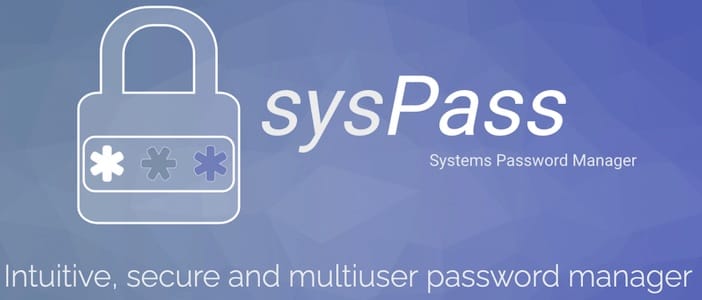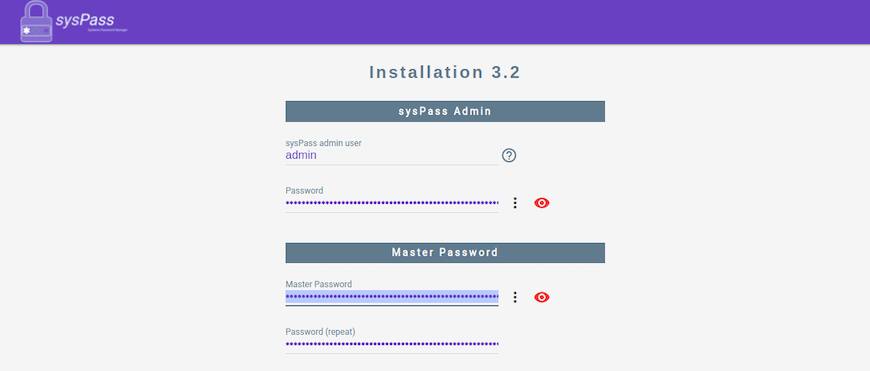How To Install sysPass Password Manager on Ubuntu 22.04 LTS

In this tutorial, we will show you how to install sysPass Password Manager on Ubuntu 22.04 LTS. For those of you who didn’t know, SysPass is a password manager that allows users to securely store and manage their passwords and other sensitive information in a central, encrypted location. It uses a combination of encryption and hashing algorithms to protect user data, and offers a range of features such as password generation, automatic login, and password sharing. SysPass is open-source software, which means that its code is publicly available and can be audited by anyone for security purposes. It is designed to be easy to use and can be accessed from any device with an internet connection.
This article assumes you have at least basic knowledge of Linux, know how to use the shell, and most importantly, you host your site on your own VPS. The installation is quite simple and assumes you are running in the root account, if not you may need to add ‘sudo‘ to the commands to get root privileges. I will show you the step-by-step installation of the sysPass Password Manager on Ubuntu 22.04 (Jammy Jellyfish). You can follow the same instructions for Ubuntu 22.04 and any other Debian-based distribution like Linux Mint, Elementary OS, Pop!_OS, and more as well.
Prerequisites
- A server running one of the following operating systems: Ubuntu 22.04, 20.04, and any other Debian-based distribution like Linux Mint.
- It’s recommended that you use a fresh OS install to prevent any potential issues.
- SSH access to the server (or just open Terminal if you’re on a desktop).
- A
non-root sudo useror access to theroot user. We recommend acting as anon-root sudo user, however, as you can harm your system if you’re not careful when acting as the root.
Install sysPass Password Manager on Ubuntu 22.04 LTS Jammy Jellyfish
Step 1. First, make sure that all your system packages are up-to-date by running the following apt commands in the terminal.
sudo apt update sudo apt upgrade
Step 2. Installing LAMP Stack on Ubuntu 22.04.
Before starting this tutorial, the LAMP server must be installed on your server. If you do not have LAMP Stack installed, you can follow our guide here.
Step 3. Installing sysPass Password Manager on Ubuntu 22.04.
By default, sysPass is not available on Ubuntu 22.04 base repository. Now run the following command below to download the latest stable version of sysPass from the Git repository of your Ubuntu system:
git clone https://github.com/nuxsmin/sysPass.git
Next, move the downloaded directory to the Apache web root directory:
mv sysPass /var/www/html/syspass
We will need to change some folders permissions:
chown -R www-data:www-data /var/www/html/syspass
chmod 750 /var/www/html/syspass/app/{config,backup}
Once is done, we need to install the Composer on your system:
nano /var/www/html/syspass/install-composer.sh
Add the following lines:
#!/bin/sh
EXPECTED_SIGNATURE="$(wget -q -O - https://composer.github.io/installer.sig)"
php -r "copy('https://getcomposer.org/installer', 'composer-setup.php');"
ACTUAL_SIGNATURE="$(php -r "echo hash_file('sha384', 'composer-setup.php');")"
if [ "$EXPECTED_SIGNATURE" != "$ACTUAL_SIGNATURE" ]
then
>&2 echo 'ERROR: Invalid installer signature'
rm composer-setup.php
exit 1
fi
php composer-setup.php --quiet
RESULT=$?
rm composer-setup.php
exit $RESULT
Save and close the file, then run the Composer installation script:
cd /var/www/html/syspass/ sh install-composer.sh
Next, run the following command to install all required PHP dependencies:
php composer.phar install --no-dev
Step 4. Configure MariaDB for sysPass.
By default, MariaDB is not hardened. You can secure MariaDB using the mysql_secure_installation script. you should read and below each step carefully which will set a root password, remove anonymous users, disallow remote root login, and remove the test database and access to secure MariaDB:
mysql_secure_installation
Configure it like this:
- Set root password? [Y/n] y - Remove anonymous users? [Y/n] y - Disallow root login remotely? [Y/n] y - Remove test database and access to it? [Y/n] y - Reload privilege tables now? [Y/n] y
Next, we will need to log in to the MariaDB console and create a database for sysPass. Run the following command:
mysql -u root -p
This will prompt you for a password, so enter your MariaDB root password and hit Enter. Once you are logged in to your database server you need to create a database for sysPass installation:
MariaDB [(none)]> create database syspassdb; MariaDB [(none)]> grant all privileges on syspassdb.* to syspassuser@localhost identified by "your-strong-password"; MariaDB [(none)]> flush privileges; MariaDB [(none)]> exit;
Step 5. Configure Apache for sysPass.
Now we create an Apache virtual host configuration:
nano /etc/apache2/sites-available/syspass.conf
Add the following lines:
<VirtualHost *:80> ServerAdmin admin@example.com DocumentRoot "/var/www/html/syspass" ServerName your-domain.com <Directory "/var/www/html/syspass/"> Options MultiViews FollowSymlinks AllowOverride All Order allow,deny Allow from all </Directory> TransferLog /var/log/apache2/syspass_access.log ErrorLog /var/log/apache2/syspass_error.log </VirtualHost>
Save and close the file, then restart the Apache webserver so that the changes take place:
sudo a2ensite syspass sudo a2enmod rewrite sudo systemctl restart apache2
Step 6. Configure Firewall.
Now we set up an Uncomplicated Firewall (UFW) with sysPass to allow public access on default web ports 80:
sudo ufw allow OpenSSH sudo ufw allow 'Apache Full' sudo ufw enable
Step 7. Accessing sysPass Password Manager Web Interface.
Once successfully installed, now open web browser and access sysPass Admin interface using the URL http://your-domain.com. You will be redirected to the following page:

Congratulations! You have successfully installed sysPass. Thanks for using this tutorial for installing sysPass Password Manager on Ubuntu 22.04 LTS Jammy Jellyfish system. For additional help or useful information, we recommend you check the sysPass website.